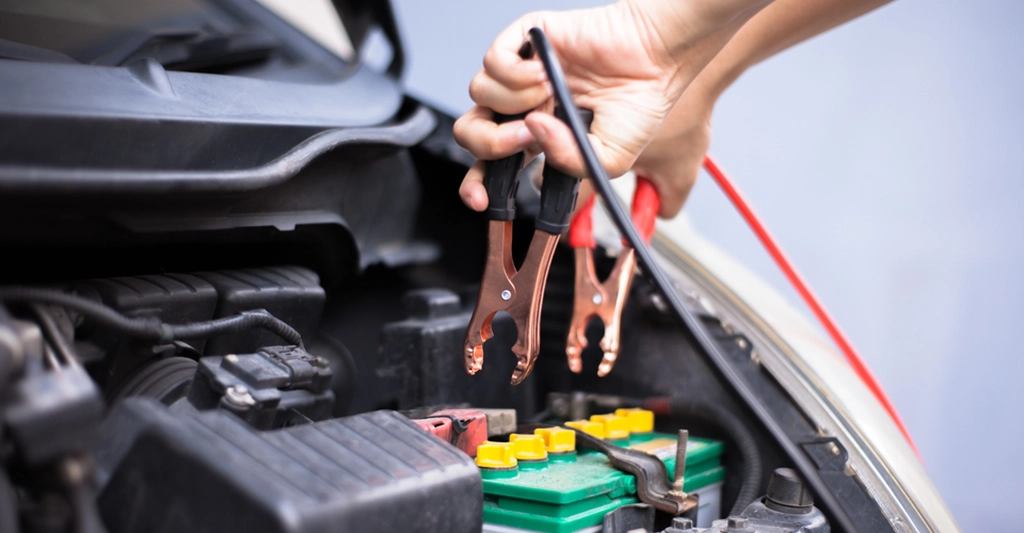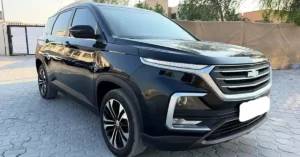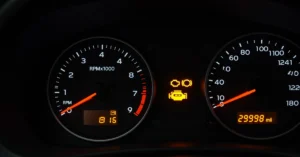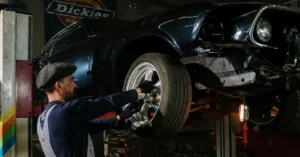The Do’s and Don’ts of Jumpstarting a Car
Avoid damaging your vehicle or risking injury with this quick, smart guide.
Jumpstarting a car may seem like something only roadside pros deal with but if you drive in the UAE, this is a skill worth knowing. Dead batteries can strike at malls, in underground parking lots, or during a scorching summer day in Dubai. And when it happens, knowing exactly what to do (and what not to do) can save your time, money, and car.
Here’s your ultimate guide to safely jumpstarting a car even in the UAE’s harsh climate.
What You’ll Need Before You Start
- A solid set of jumper cables (no rust on clamps)
- Rubber gloves for grip and safety
- Auto-rated safety goggles (polycarbonate is ideal)
- Wire brush (optional, for cleaning terminals)
- A second car with a healthy, same-voltage battery
Note: If your battery is leaking, cracked, or frozen do not attempt a jumpstart. Call a professional mechanic immediately.
Jumpstarting a Car: The Do’s
- Read Your Owner’s Manual First
Modern vehicles, especially European or hybrid models, may have specific instructions. Some even prohibit jumpstarting directly. Look for details about jumpstart lugs or safety fuses. - Confirm Battery Voltage
Both cars must use the same battery voltage (typically 12V). Mismatched voltages can cause serious damage. - Park Close but Not Touching
Both vehicles should be close enough for cables to reach, but never let them touch. - Turn Everything Off
Engines off. Radios off. Headlights off. Remove chargers or accessories from ports. - Secure the Gear
Ensure both cars are in Park (or Neutral) with parking brakes engaged. - Wear Safety Gear
Gloves and goggles are important battery sparks and acid are real hazards.
Jumpstarting a Car: The Don’ts
- Never lean directly over the battery
- Never jumpstart a battery that’s leaking or swollen
- Don’t smoke near either car sparks and fumes can ignite
- Never connect the negative cable to the dead battery’s terminal. Ground it to the chassis instead
Step-by-Step: How to Connect the Cables Safely
Follow this exact sequence to avoid sparking or short circuits:
- Connect red cable to dead battery’s positive (+) terminal
- Connect other red end to live battery’s positive (+) terminal
- Connect black cable to live battery’s negative (–) terminal
- Connect other black end to a bare metal surface on the dead car, away from the battery this is your ground
Make sure cables are clear of belts, fans, or other moving parts.
Starting the Engine: Two Safe Options
Option 1: The Safer Method
- Start the donor car and let it idle for 5 to 10 minutes
- Turn off the engine, then try to start the dead car
- If successful, remove the cables in reverse order
Option 2: The Quicker Way
- Start the donor car and keep it running
- After 5 to 10 minutes, try starting the dead car
- If it doesn’t start, check the connections and wait a few more minutes
- Once it starts, remove the cables in reverse order, one at a time
Let the car with the dead battery run for at least 30 minutes to recharge the battery.
Pro Tips to Avoid Needing a Jumpstart
- Replace your battery every 2 to 3 years especially in hot climates
- Clean battery terminals regularly to prevent corrosion
- Unplug electronics when parking for long periods
- Take longer drives occasionally short trips don’t allow full charging
Still Having Battery Issues?
If your car keeps dying even after a jumpstart, you may be dealing with:
- A faulty alternator
- A parasitic battery drain
- Poor battery connections
- Or simply an old, failing battery
Don’t guess let a professional diagnose it properly.
If your car keeps dying even after a jumpstart, you may be dealing with:
- A faulty alternator
- A parasitic battery drain
- Poor battery connections
- Or simply an old, failing battery
Don’t guess let a professional diagnose it properly.
Need Help Jumpstarting or Replacing a Battery?
MotorHub connects you to verified garages and mobile mechanics near you. Whether you’re stuck on the roadside or just need a quick replacement, we’ve got you covered.



